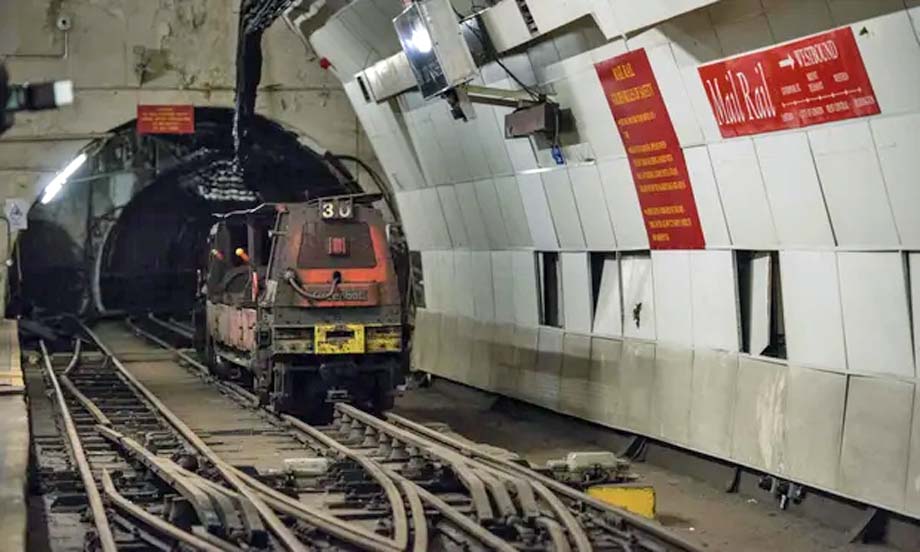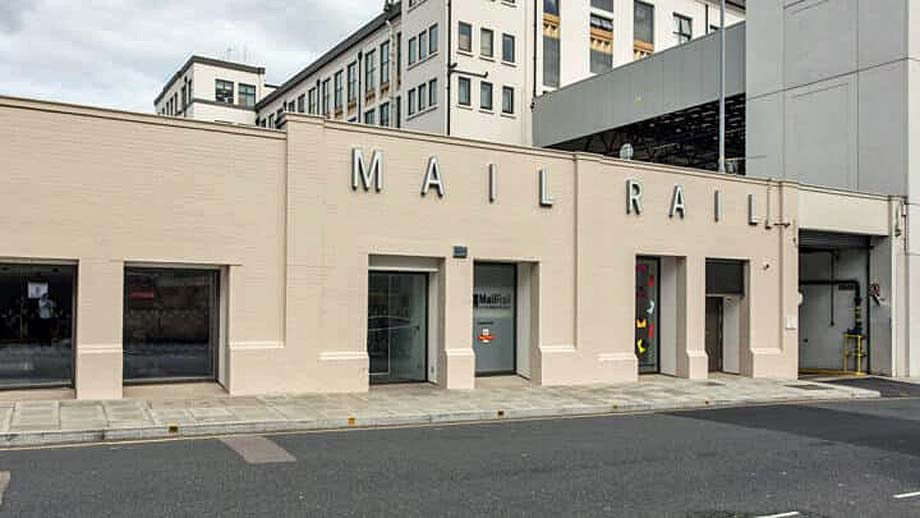
A little known railway that ran under Londoners' feet for almost a century, with its tunnels in places running within a few feet of packed underground commuter lines, will open to the public for the first time next year.
A £26 million project backed by the Heritage Lottery Fund is rebuilding the Royal Mail museum at Mount Pleasant in central London to hold its vast collection and archives, and restoring a stretch of the railway as a visitor attraction.
The Mail Rail opened in 1927, the first driverless electric railway in the world, with trains running every five minutes at peak hours along a network of 22 miles of 2 foot gauge lines, shuttling mail safe from road traffic and weather between two main railway stations, Paddington and King's Cross, and six major sorting offices.
It closed in 2003, mainly because most of the above ground sorting offices had been sold off, but a maintenance team of three, led by Darren Casey, now 44, who began working on the railway as an 18-year-old apprentice, has kept the tunnels dry and safe.
Casey originally joined a team of more than 200 engineers and maintenance workers.
"It was hard work and long hours in shifts around the clock, but there was great camaraderie down here, it was a real team," he recalled.
The last few years have been lonely, devoted to keeping the pumps running that hold the ever dripping water at bay, a specially strengthened section of the line runs under the buried river Fleet.
On the Mount Pleasant westbound platform a dartboard still hangs behind a battered door, where workers played in short bursts between trains.
Two forlorn Christmas trees remain from the last children's party in 1999, the offspring of staff and a few local schoolchildren were among the few outsiders ever allowed in, although unauthorised underground explorers have since penetrated the network.
Casey, disheartened by his changed world, was about to apply for redundancy when a manager told him of plans to reopen a stretch of the line, and convert some of the vintage rolling stock, some dating back to the 1920s, to carry passengers for the first time.
"I thought immediately that's for me, I'll have some of that thank you. It will be good to have it come back to life again."
The public will ride on a short loop of the line, between the museum and the east and westbound platforms deep under the giant Mount Pleasant sorting office, once one of the largest in the world, while audiovisual and platform displays will explain its history.
Since privatisation, the historic collection and archives are held by a charity.
The current museum, which has changed its name to the Postal Museum, will remain open while the present building is rebuilt and extended by architects Feilden Clegg Bradley.
The new displays will cover 500 years from 1516, when Henry VIII established the job of master of the posts.
The exhibition will include the earliest roadside pillar box erected on the mainland, in 1853, a year after the first went up in Jersey in the Channel Isles, and unique and priceless sheets of Penny Black stamps.
The archives include the correspondence from when a parcel was opened in 1932 and found to contain "a copy of an indecent book" that Royal Mail refused to deliver, a copy of James Joyce's Ulysses.
As well as human heroes, including Sgt. Alfred Knight, of the Post Office Rifles regiment, who won a Victoria Cross in 1917, and the postal workers who went down with the Titanic having missed the last lifeboats as they tried to rescue the mail, furry former employees will also be recalled.
The Post Office cats, who once had their own wage slips and pension schemes, were officially employed after a complaint in 1868 that the headquarters was overrun with rats and mice.
The cats started on a very respectable shilling a week, and received a wage increase in 1873, but questions were asked in 1952 when somebody spotted that their wages had been frozen for most of a century.
The most magnificent was Tibs the Great, born in November 1950, who earned obituaries in several newspapers when he died in 1964.
By then he had grown to a truly awesome 1st 9 pounds in weight, undoubtedly due less to an epic rodent intake than the fact he lived in a staff dining room.
The new museum and the Mail Rail will open in 2017.
The general admission price, including a display on the railway's history, will be £9, but the ride on the railway will cost an extra £5.50.
Maev Kennedy.
(likely no image with original article)
(usually because it's been seen before)
provisions in Section 29 of the
Canadian Copyright Modernization Act.


